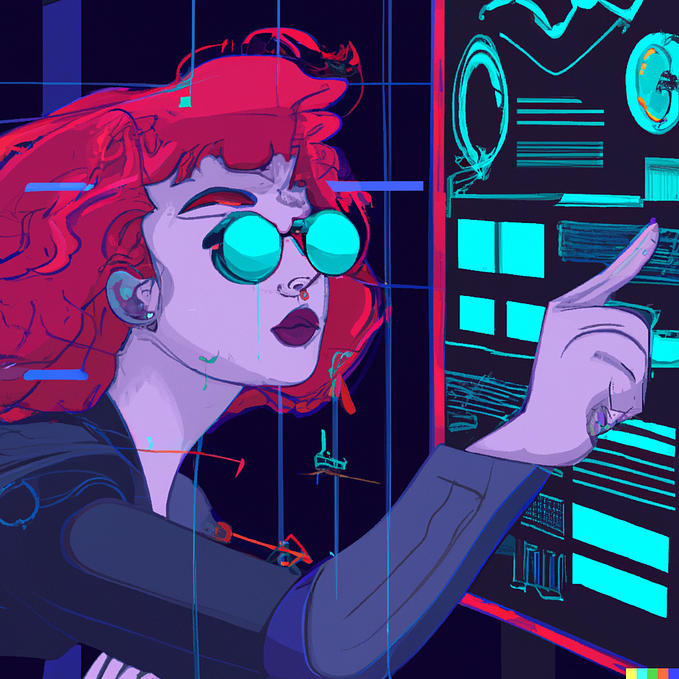Three superpowers of humanity-centered design and AI
Designing the future.
Let’s start with a question: What do you think about when you think about “artificial intelligence”?
Perhaps dystopic science fiction visions of AI, like the Terminator or the Matrix, or Westworld comes to mind?

Or perhaps you thought about automation — how robots and AI take human jobs because they’re cheaper, faster, and more reliable and rational than humans?
So here is a second question: What do you think AI is most useful for?
You might think about efficiency, saving time, and increasing productivity in your business or society.
The way and order I posed these questions put you in a technology-push mindset. This means we start with a technology and then try to find — or even create — problems where this technology would be the solution.
So, let’s rewind. Now, if I instead would have started by asking you: What do you think is the greatest challenge we — as humans — face and need to solve?
And now, ask yourself that second question again: What do you think AI would be most useful for?
Chances are that you are now starting to think about AI as a possible enabler that, together with a more extensive system of different kinds of actors, infrastructures, politics, and behavior change, might help address that more prominent and more complex problem.
This way, you have opened yourself up to a different mindset. A problem-based view. A design-oriented mindset.
The rise of AI
As a practicing Designer and Deputy Professor in digital service innovation, I have worked with — and researched — digital transformation and AI-powered services for the last 20 years. And I am interested in designing for impact. Designing for impact always means balancing how people are using and experiencing technology with what is valuable for an organization or company. This is a people-centered view of design. And in the last couple of years, the field of design has started to change because of the power of artificial intelligence.
We have seen tremendous development in AI research recently. Data, algorithms, processing power, and the mobile and global internet have become accessible in a revolutionary way. Tools like ChatGPT and Midjourney change how we think about content production and design. AI-powered services are starting to significantly affect how we design for impact.
And, of course, it’s easy to be seduced by the very idea of AI. We marvel at AI systems that can beat the best human players in advanced games like chess, Go, and Starcraft II. AI-powered systems have defeated humans in the famous TV game show “Jeopardy!” and even perform impressive creative feats like creating art, poetry, and music.
Tame and wicked problems
But even if beating humans in Chess, Go, Jeopardy, or writing a symphony is impressive, they are, in fact, what we call tame problems. Tame problems can be handled within one discipline. They are verifiable, the rules of the problem don’t change, and we can break the problem into subproblems, solve them in pieces, and arrive at an evident success or fail conclusion.
They also tend to eliminate “the human factor” because humans are, for some reason, seen as introducing irrational parameters into the problem.
This view is unfortunate.
Because, first of all, the most critical problems are NOT tame. And second, the “human factor” — our intelligence, creativity, and resourcefulness — is a superpower, not a flaw.
But here is the thing: this human superpower can become even more potent when coupled with AI-powered technology correctly.
Epic problems require epic powers
And we need every superpower we can get to address today’s challenges. Here are some interesting data from The Center of Humane Technology collected in 2021:
- 800,000 years ago is the last time there was as much CO2 in the atmosphere as today.
- 19 of the last 20 years have been the hottest on record, causing fires and hurricanes that are destroying homes and displacing people globally.
- 36 hours is all it takes for a new pathogen to travel from a remote village to major cities on every continent.
- Finally, we have seen a 600 percent cyberattack increase since the COVID-19 pandemic.
Climate change, pandemics, and cyber warfare are examples of resilience problems. They fall under the umbrella of sustainability.
And such problems are far from tame. Instead, they are complex and wicked problems that must be addressed from multiple, sometimes competing, perspectives.
Complex and wicked resilience problems will affect — and be affected by:
- Human cognition — including perception, decision-making, creativity, cognitive bias, fatigue, and boredom.
- Social structures — like law, governance, and economics.
- Cultural assumptions due to stereotyping, bias, and different norms.

These are fundamental forces in any project that aim to improve society. And they can never be reduced to a tame problem or a single technology implementation. Solving for resilience will always be complex and transdisciplinary. This is where humanity-centered design of AI-powered services is vital. Because the MORE intelligent an AI system becomes, the MORE it needs interactive capabilities and to be thoughtfully designed in an transdisciplinary human context.
Robots and farmers working together
For example, in a recent project, Halmstad University and HighFive helped a robotics company to prototype how AI could help with weed identification on farm fields. The weed robot would traverse the crop fields and identify and eliminate weeds using cameras with object recognition technology. Using design methods, we uncovered insights into how to improve both the robots’ abilities and the farmers’ skills. With iterative prototyping, we learned the importance of designing feedback loops so that the weed robot became better at identifying weeds and crops.
In cases where the robot was unsure, it could call the farmer via a screen notification or even a voice message — because the farmer would perhaps be busy doing other tasks. The farmer could then look at the camera feed on a tablet or phone, for example, and decide the correct action for the robot and quickly communicate this back to the robot.
Once one robot learns this, it can relay this training to all other robots in the fleet. This strengthens the entire fleet and can generate a significant impact on-farm productivity at scale.
This is the power of humanity-centered design: considering the interplay between humans and AI-powered services, augmenting experiences and skills, and training to develop sustainable products using the best technology available that benefits not only one actor, but an entire ecosystem of actors.
Assemble!
The real impact lies in the combination of human judgment and AI-powered predictions. And this needs to be explicitly designed and cannot be left to chance.
So now, as we move on to the complex challenges of the future, we have three superpowers:
- The power of our innate human resourcefulness, ability to act and make hard decisions,
- The power of AI and data-driven prediction, and
- The power of humanity-centered design.
When we combine these, we can significantly upgrade our capacity to take on our most significant and complex challenges.
And we need to.
It’s the only way to address complex resilience problems, such as climate change, healthcare, security, and how we run our societies.
The take-aways
There are two things to remember:
1. The real value of AI is not about automating away humans. AI is best used to improve ourselves to help us address complex resilience problems. The more intelligent an AI is, the more interactive capabilities and cooperation with humans need to be designed.
2. AI is not a technology-first phenomenon. It is a potent enabler for taking on complex challenges. And for AI to be beneficial, we also need several non-technical competencies when designing human-centered AI-powered services and products.
So the view of automation and AI as a more objective and rational rival to “unreliable” humans is an old and outdated way of thinking. Designing for old, traditional targets is not sufficient. We need to focus on designing for what the future should be like. And that future has more of the human factor — powered by well-designed AI.
Interested in learning more? Have a look at the book “Designing AI-Powered Services”.
Read more
Johnson, M., & Vera, A. (2019). No AI Is an Island: The Case for Teaming Intelligence. AI Magazine, 40(1), 16–28. https://doi.org/10.1609/aimag.v40i1.2842
Nielsen, J. (2023). AI Is First New UI Paradigm in 60 Years. https://www.uxtigers.com/post/ai-new-ui-paradigm
Norman, Donald A. (2023). Design for a Better World: Meaningful, Sustainable, Humanity Centered. Cambridge, MA: The MIT Press.
The Center of Humane Technology (2022). Key Issues Overview. https://www.humanetech.com/key-issues
Rittel, H. W. J., Webber, M. M. (1973). Dilemmas in a General Theory of Planning. Policy Sciences, Vol. 4, №2 (Jun., 1973), pp. 155–169 Springer. http://www.jstor.org/stable/4531523 .
Wärnestål. P. (2023). Designing AI-Powered Services. Lund: Studentlitteratur.
› English e-book and print editions







